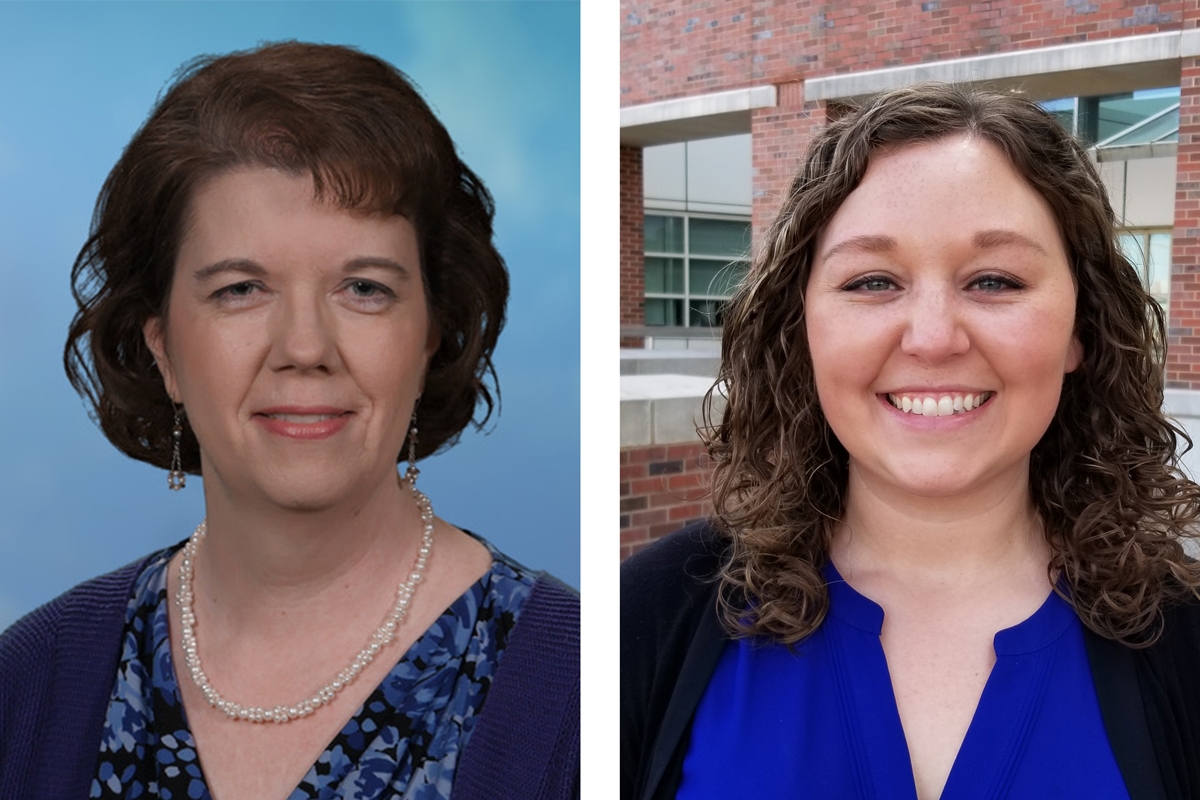The White House released the Fifth U.S. National Climate Assessment on Tuesday to inform the public and decision-makers across the nation about the status of climate change, its current impacts, and its future risks in the U.S. In addition, the report describes mitigation and adaptation responses that are occurring, as well as new opportunities for economic growth and community resilience.
Renee McPherson, Ph.D., served as the lead author for the Southern Great Plains chapter, which focused on Kansas, Oklahoma, and Texas. McPherson is an associate professor in the University of Oklahoma’s Department of Geography and Environmental Sustainability and the university director of the South Central Climate Adaptation Science Center. Her author team included OU’s Darrian Bertrand, climate assessment specialist for the Southern Climate Impacts Planning Program, and Taylor Broadbent, an undergraduate assistant for the South Central Climate Adaptation Science Center and a 2023 Fulbright Scholar. Jayash Paudel, Ph.D., an assistant professor in OU’s Department of Economics, also served as an author for the Northwest chapter.
The Fifth National Climate Assessment describes how all regions of the U.S. are experiencing climate change now. The most noticeable impacts are more frequent and intense extreme events, such as droughts, heat waves, hurricanes, extreme precipitation events and coastal flooding. When combined with other stressors, such as poverty or invasive species, the effects can ripple through multiple systems, leading to greater risks for people or ecosystems. Impacts also disproportionately harm already overburdened or underserved communities, contributing to greater societal inequities.
“For people in the Southern Great Plains, climate change is affecting how we live, work, and play,” McPherson said. “We can choose to respond in ways that make our communities healthier, more just, and more resilient.”
Bertrand added, "While resilience actions are taking place across the Southern Great Plains, more actions are required to reduce the effects of climate change.” Their chapter outlines example actions that individuals, communities, and businesses can implement to address the expected impacts and reduce future emissions.
The Southern Great Plains – Kansas, Oklahoma, and Texas – have experienced 52 billion-dollar disasters from 2018 to 2022. The number of days with two or more inches of rainfall has increased across the region, especially east of Interstate 35. These heavy rainfall events cause more erosion, chemical runoff from agricultural fields, and dangers to motorists. In some cases, they can damage homes, crops, and infrastructure, overstress stormwater systems, and inundate recreation areas.
By midcentury, temperatures are projected to be historically unprecedented since observations began in the late 1800s. Hot temperatures are hazardous for outdoor workers, children, senior adults, and those with chronic diseases such as cardiovascular or respiratory diseases. Heat-related injuries and fatalities are expected to increase as the number of very hot days increases. Athletes of all ages who train or compete outdoors during the warmest months are expected to be at increased risk. Parents, coaches, trainers, and athletic facility managers can prepare now to reduce harmful health outcomes for athletes.
Many individuals, communities, businesses, and governments are taking action to reduce their emissions of heat-trapping gases. These actions have caused the total U.S. emissions to decline while the population and economy grew. Between 2010 and 2019, Kansas and Oklahoma have reduced their carbon emissions by about 15%, but Texas’ emissions increased by over 10%.
“The growth of renewable sources of electricity generation, such as wind and solar, across the Southern Great Plains is a step toward a clean energy future,” McPherson said. “However, most of the businesses and industries in our region have not yet realized what an amazing opportunity they have now to lead the nation and the world in the sustainability revolution needed to minimize future impacts of climate change.”
Even with a strong reduction in emissions, heat-trapping gases like carbon dioxide in the atmosphere will remain there for centuries to come. However, the authors say that every increment of warming worsens impacts, so actions taken now to reduce emissions will lead to better outcomes in the future. Adaptation is also needed to reduce the risks and impacts of climate change.
Bertrand said that the Southern Great Plains chapter “provides example actions that communities can implement to address the impacts of more frequent or severe droughts on communities, heavier rainfall events on businesses, hotter summer temperatures on outdoor activities, equity and justice issues related to increasing hurricane risk, and severe winter storms on public services.”
The Fifth National Climate Assessment was written by over 500 authors who volunteered their time. Almost 300 technical contributors and review editors also contributed to the report. Other University of Oklahoma experts who worked on the Fifth National Climate Assessment include Sharon Hausam, Ph.D. (technical contributor); Gary McManus (technical contributor); Lauren Mullenbach, Ph.D. (technical contributor); Mark Shafer, Ph.D. (review editor); and Adrienne Wootten, Ph.D. (technical contributor).
The full Fifth National Climate Assessment can be read online at https://nca2023.globalchange.gov/, and Chapter 26, “Southern Great Plains,” can be read at https://nca2023.globalchange.gov/chapter/26/


